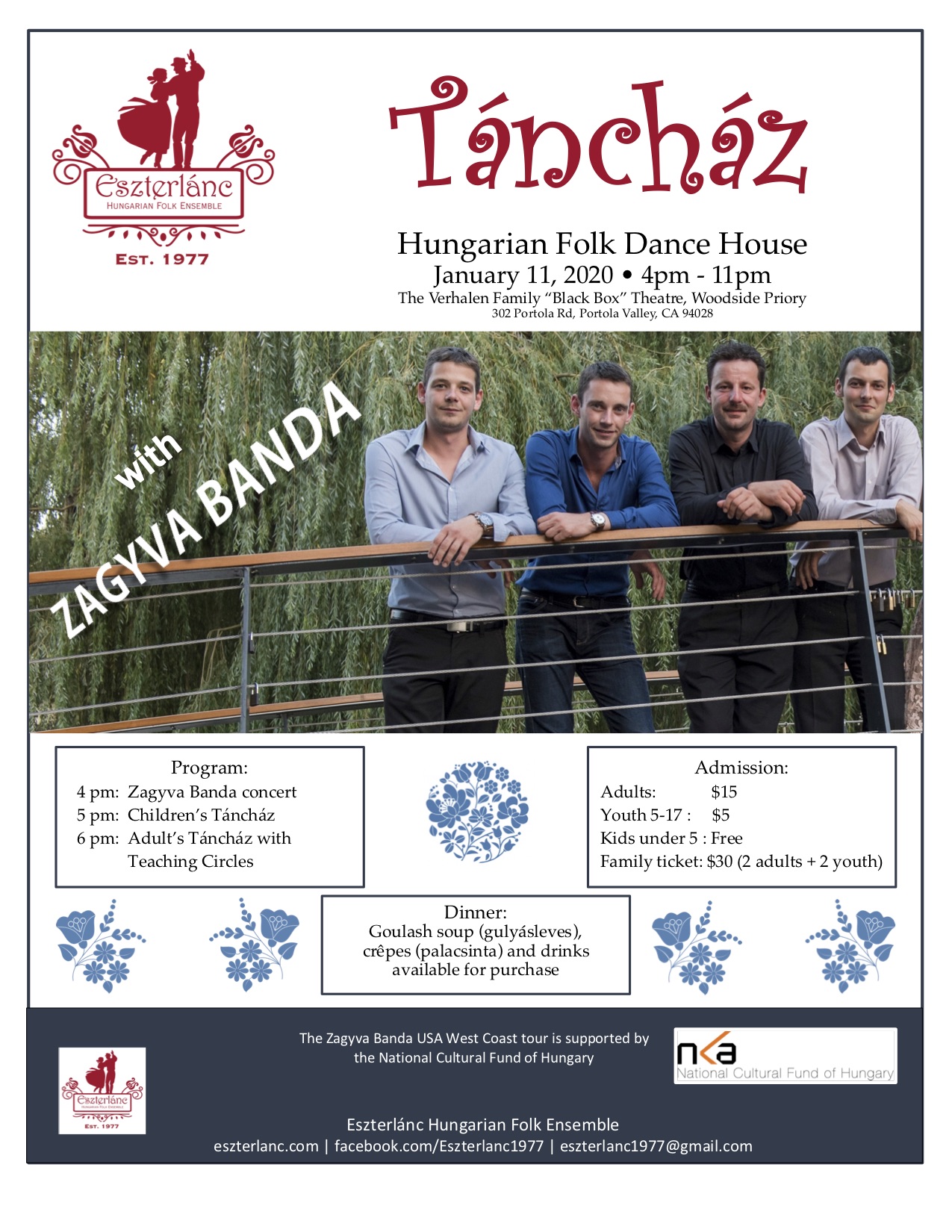Eszterlánc dancers presented dances from Szilágyság, Transylvania, at the 2nd Hungarian Festival in Phoenix, Arizona
46th Annual Hungarian Scouts Ball
Eszterlánc performing Mezőségi Dances at the 46th Annual Hungarian Scouts Ball – Watch those slaps and turns! 💃🕺
Orsi Kozek, László Tihanyi, Aliz Reszler, Vince Tulit
Hangtechnikai eszközök a Bethlen Gábor Alap támogatásával
Az Eszterlánc 2019-ben sikeresen pályázott és a Bethlen Gábor Alaptól támogatást nyert hangtechnikai eszközök megvásárlására.
A Bethlen Gábor Alaptól kapott támogatás az Eszterláncot és rajta keresztül az Aranykapu Bandát látta el hangtechnikával, ezzel növelve a táncpróbák hatékonyságát, gördülékenyebbé és magasabb minőségűvé téve a táncegyüttes és a zenekar fellépéseit.
A támogatásból az együttes a következő eszközökbe ruházott be:
- 1 db Keverő
- 4 db Hangszóró, hozzá tartozó XLR és tápkábelek
- 5 db Mikrofon, állvány és XLR kábelek
- 2 db Drótnélküli mikrofon
Az eszközök állandó hangosítást biztosítanak az Eszterlánc heti táncpróbáin. Az együttes drótnélküli mikrofont használ a táncházakban való tánctanításon, illetve koncerteken a hegedű hangosítására.
A fenti eszközök segítségével az Eszterlánc Magyar Népi Együttes szervezésében, illetve részvételével zajlott számos 2019-20-as esemény hangosítását oldottuk meg.
Köszönjük a Bethlen Gábor Alap támogatását!

Our year 2019 in pictures
Táncház with Zagyva Banda!
Join us on January 11, 2020 for a wonderful evening of Hungarian folk music, dance and good food!
